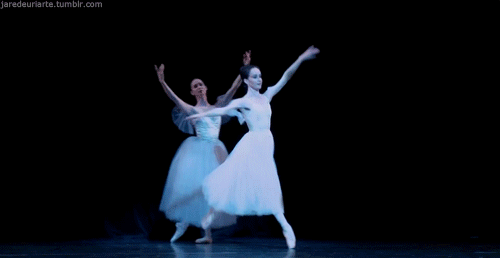The Meaning Behind Modern Dance
First, I decided to watch the Still/Here video excerpt and I was widely confused. The dances performed actually reminded me of ballet. The moves were elegantly executed and the performers danced with such fluidity and emotion that I was intrigued to continue watching. However, the music perplexed me. I began pondering, “Why does the speaker continue to repeat ‘Tell me how to fight this disease because I am going to win?” I could not help but wonder: what disease? Who is speaking? Why is this happening?

Then, I read Zita Allen’s History Behind Still/Here and realized that these dancers were conveying real life survivor stories on those who had AIDS, breast cancer, and other illnesses. I watched the video again, and it became much more meaningful to me. I understood why these dancers had a specific movement or stance. As mentioned in class, I focused on the position of these dancers (whether their weight appeared to be latched to the ground or floating up to the sky) and I found a new appreciation for modern dancers. As said by Allen, “one dancer clutched her breast violently as a survivor’s voice plumbed the depths of despair while struggling to hang on to hope.” Each precise position contains so much meaning and to express that as well as those dancers did is very impressive.
While reading Arlene Croce’s Discussing the Undiscussable, I was immediately shocked that I was reading a piece about Bill T. Jone’s Still/Here by an author who had not actually seen it. Croce discusses her inability to review “victim art.” Despite her startling statement about how the public views victim art, I agree with her. She says, “there’s no doubt that the public likes to see victims, if only to patronize them with applause” (710). However, I disagree with her general attitude towards Bill T. Jones and what she calls “victim art.” Further in the article, Croce states “Jones is undiscussable … because he has taken sanctuary among the unwell. Victim art defies criticism not only because we feel sorry for the victim but because we are cowed by art” (718).

At first, the clips of modern art in class and the excerpt from Still/Here boggled me. I had no idea what was going on, but after reading these two article, I have gained a deeper appreciation for modern dance. Allen’s article was extremely helpful in describing the history and meaning of Still/Here and I was able to watch the video again with a higher sense of gratitude. Overall, I disagreed with Croce’s statements, especially because she had not even watched Still/Here. I am excited to witness Thursday’s performance with an open mind.

